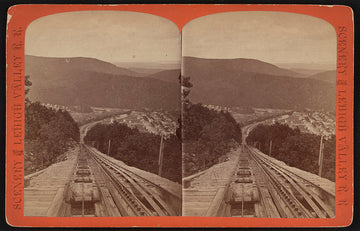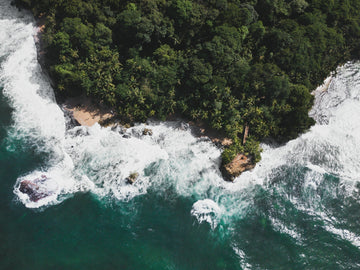Papua New Guinea Uncovered
Papua New Guinea, a captivating country in the southwestern Pacific Ocean, offers a unique blend of geography, culture, history, and a thriving coffee industry that sets it apart from other nations. With its stunning landscapes, vibrant indigenous cultures, and a complex history shaped by colonialism and world events, Papua New Guinea provides a fascinating backdrop for its burgeoning coffee sector.
In this post, we will delve into the country's geographical features and climate, explore its rich cultural tapestry and historical events, and uncover the intricacies of its coffee industry, which produces some of the world's most sought-after beans. Join us as we embark on this journey to uncover the essence of Papua New Guinea and the factors that contribute to its exceptional coffee production.
Geography and Climate
Papua New Guinea is a fascinating country situated in the southwestern Pacific Ocean, occupying the eastern half of New Guinea Island and numerous surrounding islands, including the Bismarck Archipelago, the Admiralty Islands, and the Trobriand Islands. The diverse topography of Papua New Guinea is characterized by mountain ranges, coastal lowlands, and highlands with valleys. Notably, the country is home to the Central Range, which contains the highest peak in Oceania, Mount Wilhelm, standing at 14,793 ft. The low-lying areas along the coastline feature fertile plains, swamps, and mangroves, while the central part of the country boasts the fertile Highlands region, encompassing vast valleys, rolling hills, and some of the world's largest and most untouched rainforests.
The country has a tropical climate that significantly influences its coffee production. It experiences a warm, humid climate throughout the year, with average temperatures ranging from 77°F to 95°F (25°C to 35°C). There are two main seasons in Papua New Guinea: the rainy season, typically lasting from December to March, and the dry season, which runs from May to October. However, rainfall can vary significantly depending on the region and altitude. The combination of the country's climate and fertile volcanic soil provides ideal conditions for growing high-quality coffee. The distinct seasons allow for the timely flowering and ripening of coffee cherries, ensuring optimal flavor development.
Culture and History
Papua New Guinea is home to a remarkable variety of indigenous cultures, with over 800 distinct ethnic groups coexisting in the country, each with its own customs, beliefs, and way of life. The nation has one of the highest concentrations of languages in the world, with more than 800 spoken across the country. Traditional art forms, such as wood carving, pottery, and weaving, are essential aspects of local culture.
The history of Papua New Guinea has been shaped by several key events. Portuguese explorer Jorge de Menezes first visited the island in 1526. However, it was not until the late 19th century that Europeans began to establish a significant presence in the region. In the 1880s, Germany claimed the northeastern part of New Guinea Island, while Britain took control of the southeastern portion. The two colonial powers governed their territories separately until 1906 when Australia assumed control over the southeastern part of the island, and later over the entire island under a League of Nations mandate in 1921.
Papua New Guinea was a strategic battleground during World War II, with fierce fighting between Japanese and Allied forces. The Kokoda Track campaign was particularly brutal and is remembered as a significant part of the country's wartime history. Papua New Guinea gained independence from Australia in 1975. Since then, the country has faced numerous challenges, including political instability, economic difficulties, and ongoing conflicts between different ethnic groups.
Papua New Guinea offers a wealth of attractions for visitors. The capital city, Port Moresby, is home to several fascinating sites, such as the National Museum and Art Gallery, Parliament House, and the vibrant Ela Beach Craft Market.
Located in the Highlands region, Tari Basin is known for its stunning landscapes, unique bird species, and the Huli people, famous for their elaborate headdresses and traditional ceremonies. The Sepik River region, one of the longest rivers in the world, is lined with traditional villages where visitors can experience local customs and observe the intricate wood carvings for which the area is renowned. The 60-mile Kokoda Track through the Owen Stanley Range was the site of a pivotal World War II battle and is now a challenging and rewarding trek, providing insights into the country's wartime history and breathtaking natural beauty.
Papua New Guinea hosts several annual cultural events, such as the Goroka Show, the Mount Hagen Cultural Show, and the Rabaul Mask Festival, which showcase the diverse traditions and vibrant customs of the country's many ethnic groups.
Coffee in Papua New Guinea
The country's coffee industry has a unique history, with coffee first introduced to the country in the late 19th century by German colonists who planted Arabica coffee in the highlands. The coffee industry began to expand significantly after World War II, with the support of the Australian administration. Over time, coffee has become one of the country's primary agricultural exports.
Papua New Guinea has several coffee-producing regions, each with distinct characteristics. The highlands are the main coffee-growing area, with ideal elevation, fertile volcanic soil, and suitable climate conditions, producing some of the country's finest coffee beans. Key coffee-producing provinces include Eastern Highlands, Western Highlands, Simbu, Morobe, and Jiwaka. Each province has its own microclimate and soil composition, contributing to the unique flavor profiles of the coffee beans grown in these areas.
The country is known for its high-quality Arabica coffee, featuring a diverse range of varietals and processing methods. While Typica and Bourbon varietals are the most common, other varietals such as Arusha, Mundo Novo, and Blue Mountain can also be found in Papua New Guinea. Coffee processing in the country involves both wet and dry methods. Wet processing involves removing the pulp from the coffee cherry, fermenting the beans, and then washing and drying them. Dry processing involves drying the whole coffee cherry, then removing the dried pulp and parchment. Each method imparts distinct flavors and characteristics to the final coffee beans.
Papua New Guinean coffee offers a distinctive and memorable taste experience, known for its complexity, featuring a wide range of flavors such as fruit, chocolate, and floral notes. These flavors can vary depending on the region, altitude, and processing methods. The coffee typically has a bright, vibrant acidity and a medium to full body, contributing to a well-rounded and satisfying cup. While Papua New Guinean coffee shares some similarities with other coffees from the Pacific and Southeast Asian regions, its unique combination of flavors, acidity, and body sets it apart from its counterparts.
Sustainability is at the heart of Papua New Guinea's coffee industry. The majority of coffee production in the country is undertaken by smallholder farmers, often farming less than a hectare of land. These farmers play a vital role in the country's coffee industry and local communities. Various initiatives, both governmental and non-governmental, support the country's coffee industry by promoting environmental conservation, fostering social development, and providing resources for smallholder farmers to improve their livelihoods and the quality of their coffee.
Our Papua New Guinean Mount Bosavi Reserve
Papua New Guinea's unique geography, rich cultural history, and diverse coffee industry make it a truly fascinating country. With its ideal climate and fertile volcanic soil, Papua New Guinea produces some of the world's finest coffee beans, which boast complex flavor profiles and distinctive characteristics. The country's commitment to sustainability, as well as its support for smallholder farmers, further underscores the importance of its coffee industry both domestically and internationally.
Our Papua New Guinean coffee is grown on several small plots on the Southern slopes of Mount Bosavi in one of the most remote areas of Papua New Guinea. The coffee cherries are grown the old way, without the use of fertilizers or modern farming equipment. All processing is done outdoors, by hand, in traditional woven reed baskets. Our Mount Bosavi Reserve is rich and savory in profile, with bold notes of nut, fresh peppercorn, and orange spice.



